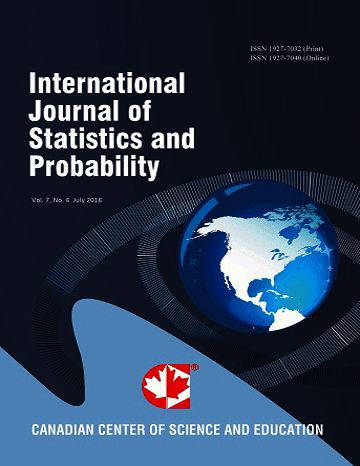Detection of Multiple Change Points by the Filtered Derivative and False Discovery Rate
- Mohamed Elmi
Abstract
Let $\mathbf{X}=(X_1,X_2,\ldots,X_n)$ be a time series, that is a sequence of random variable indexed by the time $ t=1,2,\ldots,n $. We assume the existence of a segmentation $\tau=(\tau_1,\tau_2,\ldots,\tau_n)$ such that $X_i$ is a family of independent identically distributed (i.i.d) random variable for i $\in (\tau_k,\tau_k+1],~and~k=0,\ldots,K$ where by convention $\tau_o$ and $\tau_{K+1}=N$. In the literature, it exist two main kinds of change points detections: The change points on-line and the change points off-line. In this work, we consider only the change point analysis (off-line), when number of change points is unknown. The result obtained is based on Filtered Derivative method where we use a second step based on False Discovery Rate. We compare numerically this new method with the Filtered Derivative with p-Value.- Full Text:
 PDF
PDF
- DOI:10.5539/ijsp.v3n1p12
Journal Metrics
- h-index (December 2021): 20
- i10-index (December 2021): 51
- h5-index (December 2021): N/A
- h5-median(December 2021): N/A
( The data was calculated based on Google Scholar Citations. Click Here to Learn More. )
Index
- ACNP
- Aerospace Database
- BASE (Bielefeld Academic Search Engine)
- CNKI Scholar
- COPAC
- DTU Library
- Elektronische Zeitschriftenbibliothek (EZB)
- EuroPub Database
- Excellence in Research for Australia (ERA)
- Google Scholar
- Harvard Library
- Infotrieve
- JournalTOCs
- LOCKSS
- MIAR
- Mir@bel
- PKP Open Archives Harvester
- Publons
- ResearchGate
- SHERPA/RoMEO
- Standard Periodical Directory
- Technische Informationsbibliothek (TIB)
- UCR Library
- WorldCat
Contact
- Wendy SmithEditorial Assistant
- ijsp@ccsenet.org
